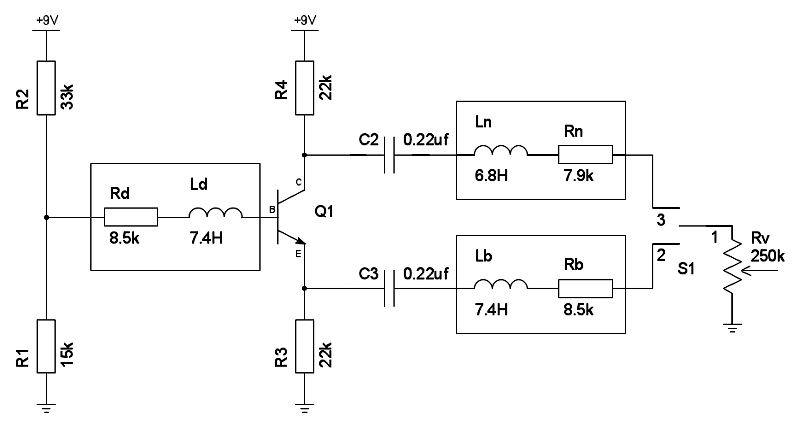Minor edit: bypassed the bias divider, added DC path to ground on the high impeadance side of the pickups.

Will the 2.7M to ground create a significant noise source? Since it's a 3 - way, maybe just putting it across the switch pins is enough to tame any pops, let the volume ground take care of things.

Leave a comment: